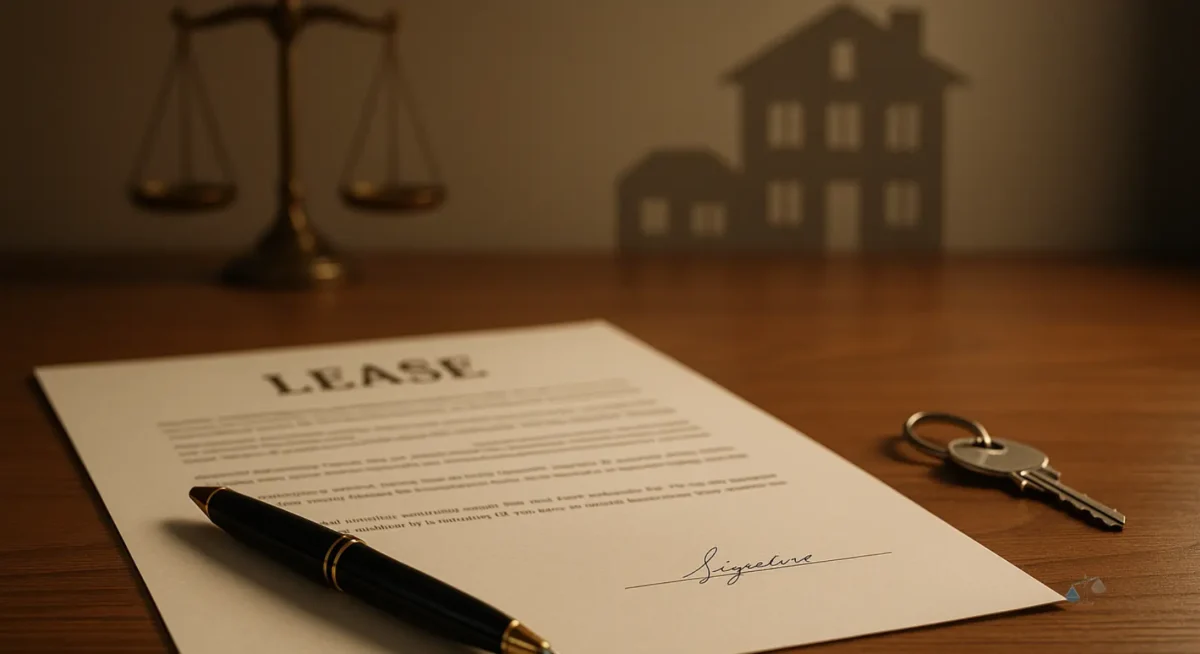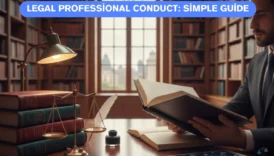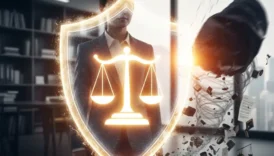Legal Lease Agreement: Definition and Clear Examples

- Legal Lease Agreement: Definition and Clear Examples
- Meaning of Legal Lease Agreement
- Legal Basis and Core Requirements
- Types of Lease Agreements
- 1. Fixed-Term Lease
- 2. Periodic (Month-to-Month) Lease
- 3. Commercial Lease
- 4. Sublease Agreement
- 5. Ground or Long-Term Lease
- Rights and Duties of Landlords and Tenants
- 1. Landlord’s Rights and Obligations
- 2. Tenant’s Rights and Obligations
- Common Clauses in Lease Agreements
- Legal Protections for Both Parties
- Renewal and Termination of Lease Agreements
- 1. Lease Renewal
- 2. Lease Termination
- Breach of Lease and Legal Remedies
- Tenant Breach
- Landlord Breach
- Dispute Resolution and Enforcement
- 1. Mediation
- 2. Arbitration
- 3. Small Claims Court
- The Importance of Written Leases and Proper Recordkeeping
- 1. Why Written Leases Matter
- 2. Recordkeeping for Legal Protection
- Termination Pitfalls and Legal Risks
- Practical Legal Tips for Landlords and Tenants
- For Landlords
- For Tenants
- Lease Enforcement and Dispute Scenarios
- 1. Typical Enforcement Path
- 2. Example Case
- 3. Tenant Enforcement Rights
- The Future of Lease Agreements: Digital and E-Signed Contracts
- Advantages of Digital Leases
- Risks and Considerations
- Author Note
- FAQ — Legal Lease Agreements
- What is a legal lease agreement?
- Does a lease need to be in writing to be valid?
- Can a landlord change rent during a lease term?
- What happens if a tenant breaks a lease early?
- Is an electronic lease legally binding?
- Can a landlord enter the property without notice?
- What are common reasons a landlord can evict a tenant?
- What rights protect tenants under U.S. law?
- Table of Contents For Lease Agreements
- Keyword For Legal Lease Agreements
Meaning of Legal Lease Agreement
Definition of legal lease agreement: is a legally binding contract that establishes the relationship between a landlord (lessor) and a tenant (lessee) for the rental of property — usually real estate such as an apartment, house, or commercial space. It defines each party’s rights, responsibilities, and remedies, and is enforceable in court once both parties agree and sign.
At its core, a lease serves as a transfer of possession, not ownership.
The tenant gains the right to occupy or use the property for a specific period, while the landlord retains title and collects rent.
Because a lease creates ongoing legal obligations, even a simple rental arrangement becomes a matter of contract law once formalized.
“A handshake may start a tenancy, but a signed lease protects both sides.”
Legal Basis and Core Requirements
For a lease to be legally valid, it must meet several essential criteria recognized under contract and property law.
Although details vary by state, most U.S. jurisdictions require the following foundational elements:
| Element | Requirement | Explanation |
|---|---|---|
| Offer & Acceptance | Mutual agreement between landlord and tenant. | Each party must willingly consent. |
| Consideration | Exchange of value — typically rent for possession. | Payment is what makes the contract binding. |
| Legal Capacity | Both parties must be of sound mind and lawful age. | Minors or incapacitated persons cannot sign binding leases. |
| Legal Purpose | The lease cannot involve unlawful activity. | Properties used for illegal purposes void the lease. |
| Definite Terms | Clear start and end dates, rent amount, and obligations. | Prevents ambiguity or future disputes. |
Statute of Frauds Requirement:
Leases exceeding one year must generally be in writing to be enforceable.
Verbal month-to-month leases may still be valid but offer limited protection in court.
Types of Lease Agreements
Lease agreements come in many forms depending on the property type, duration, and payment structure.
Each variation carries different rights and risks for landlords and tenants alike.
1. Fixed-Term Lease
- Runs for a specified period (e.g., 12 months).
- Cannot be terminated early without cause or mutual consent.
- Rent amount remains constant unless a clause allows increases.
Best For: Predictable, long-term tenancies.
2. Periodic (Month-to-Month) Lease
- Renews automatically each rental cycle until either party provides notice.
- Offers flexibility for both tenant and landlord.
Risk: Sudden rent changes or termination with short notice.
3. Commercial Lease
- Applies to business use (offices, warehouses, retail).
- Often involves triple-net (NNN) terms — tenants pay rent plus property taxes, insurance, and maintenance.
Requires careful negotiation, as commercial leases are less regulated than residential ones.
4. Sublease Agreement
- A tenant rents part or all of the leased premises to another party.
- Requires landlord’s consent unless the lease explicitly permits subleasing.
Tip: The original tenant remains legally responsible under the master lease.
5. Ground or Long-Term Lease
- Involves leasing land for extended use (often 50+ years).
- Common in commercial developments and renewable energy projects.
“The lease form defines the relationship — residential leases protect habitability, while commercial ones protect investment.”
Rights and Duties of Landlords and Tenants
Every lease agreement establishes a two-way legal relationship — each party gains rights but also assumes specific obligations.
Courts treat this balance as a matter of both contract law and property law, ensuring fairness and stability within the tenancy.
1. Landlord’s Rights and Obligations
Primary Rights
- To receive rent in full and on time.
- To enter the premises for inspection or maintenance (with proper notice).
- To seek eviction for nonpayment or violation of lease terms.
Legal Duties
- Maintain the property in habitable condition (safe, clean, functional utilities).
- Comply with local housing and safety codes.
- Respect the tenant’s right to quiet enjoyment — meaning freedom from unreasonable disturbance or intrusion.
Case Example:
In Javins v. First National Realty Corp. (1970), the court held that a landlord’s duty to maintain habitability is implied in every residential lease — a landmark case that shaped modern tenant protection laws.
2. Tenant’s Rights and Obligations
Primary Rights
- Exclusive possession of the property during the lease term.
- Privacy and protection from unlawful landlord entry.
- Right to a habitable environment free from discrimination or retaliation.
Legal Duties
- Pay rent and utilities as agreed.
- Keep the property clean and avoid damage.
- Follow community rules and refrain from illegal activity on the premises.
“A lease creates not just rights to live, but duties to live responsibly.”
If tenants fail to meet these obligations, landlords may issue notices to cure, demand rent payment, or initiate lawful eviction proceedings (never self-help evictions, which are illegal in most states).
Common Clauses in Lease Agreements
A strong lease clearly spells out both expectations and remedies.
While language varies, most leases include several core provisions recognized across jurisdictions.
| Clause Name | Purpose | Legal Note |
|---|---|---|
| Security Deposit | Ensures payment for damages or unpaid rent. | States must define refund timelines (often 30–45 days). |
| Maintenance & Repairs | Outlines repair responsibilities. | Landlords usually handle structural issues; tenants handle daily upkeep. |
| Access & Entry | Defines notice required for landlord entry. | Typically 24–48 hours unless emergency. |
| Renewal or Termination | Sets notice periods and renewal options. | Must align with state law notice rules. |
| Default & Remedies | Details actions for late payment or breach. | May include late fees or right to terminate. |
Additional Clauses
- Use Restriction: Limits property use (residential vs. commercial).
- Alteration Clause: Regulates modifications or improvements.
- Insurance Requirement: Mandates coverage for liability or property damage.
Legal Protections for Both Parties
Both tenants and landlords benefit from statutory protections that ensure fairness and compliance.
Tenant Protections
- Fair Housing Act (1968): Prohibits discrimination based on race, religion, sex, disability, or family status.
- State Security Deposit Laws: Cap deposit amounts and require itemized deductions.
- Anti-Retaliation Laws: Prevent eviction for reporting violations or requesting repairs.
Landlord Protections
- Right to Evict for Cause: Legal recourse for unpaid rent or lease breach.
- Property Preservation: Authority to maintain safety and integrity of the premises.
- Indemnification Clauses: Protect landlords from liability for tenant actions.
“Modern lease law aims not to favor one side, but to preserve the integrity of the bargain.”
Renewal and Termination of Lease Agreements
Every lease, no matter how well drafted, eventually reaches a point where it must either renew, expire, or terminate early.
The law provides structured mechanisms to handle each scenario fairly, minimizing conflict between landlords and tenants.
1. Lease Renewal
A lease can renew automatically or by mutual agreement.
Many modern leases include an “option to renew” clause, allowing tenants to extend their stay by providing written notice within a specific time frame (e.g., 60 days before expiration).
Renewal Types:
- Automatic Renewal: Periodic leases renew by default unless proper notice is given.
- Negotiated Renewal: Terms such as rent or duration may change through new agreement.
Tip: Always ensure renewal terms are documented in writing to avoid misunderstandings or claims of implied tenancy.
“A renewed lease without a renewed understanding is just old trouble reborn.”
2. Lease Termination
Termination can occur either naturally (when the term ends) or prematurely (due to legal cause or mutual consent).
Common Grounds for Termination:
- Expiration: Lease ends on the agreed date — no further notice required.
- Mutual Agreement: Both parties consent to early termination (documented in writing).
- Breach of Contract: Nonpayment, illegal use, or property damage by tenant.
- Failure to Maintain Habitability: Landlord neglects essential repairs, allowing tenant to terminate.
- Notice to Quit: A statutory notice issued to end periodic tenancies.
Notice Periods (Typical U.S. Standard):
| Lease Type | Notice Required | Who Issues Notice |
|---|---|---|
| Month-to-Month | 30 Days | Either Party |
| Quarterly | 60 Days | Either Party |
| Annual / Fixed-Term | Varies | Specified in Lease |
Special Terminations:
Certain states allow early termination for domestic violence victims, military deployment (Servicemembers Civil Relief Act), or severe health hazards.
Breach of Lease and Legal Remedies
A breach of lease occurs when either party fails to uphold a contractual obligation.
The remedies depend on which side violates the agreement and the severity of the breach.
Tenant Breach
- Nonpayment of Rent: The most common cause.
- Unauthorized Alterations or Subleasing.
- Property Damage or Illegal Activity.
Landlord Remedies:
- Issue a Notice to Pay or Quit (typically 3–5 days).
- File for eviction through proper court procedure.
- Deduct damages from security deposit or pursue civil action for losses.
Landlord Breach
- Failure to maintain habitability or make necessary repairs.
- Illegal entry or harassment.
- Wrongful retention of security deposit.
Tenant Remedies:
- Withholding rent (where allowed by state law).
- Repair-and-deduct approach (tenant fixes issue and deducts cost).
- Legal action for damages or constructive eviction claims.
“A lease without accountability is a promise without protection.”
Dispute Resolution and Enforcement
Most modern leases encourage resolving disagreements before litigation.
Common methods include:
1. Mediation
Neutral third-party helps both sides reach compromise — cost-effective and preserves relationships.
2. Arbitration
Binding decision from a neutral arbitrator; often required under a lease’s dispute resolution clause.
3. Small Claims Court
Ideal for minor disputes (e.g., unpaid rent or deposit refund). Faster and cheaper than formal trials.
Court Enforcement:
If mediation or arbitration fails, the injured party may seek court enforcement or damages, depending on state tenancy laws.
Judgments can include monetary awards, possession orders, or injunctive relief (to stop further violations).
The Importance of Written Leases and Proper Recordkeeping
While verbal agreements may appear convenient, written leases are the cornerstone of enforceable rental relationships.
A written document protects both parties by clearly defining obligations, timeframes, and dispute procedures — leaving little room for misinterpretation or manipulation.
1. Why Written Leases Matter
- Clarity and Evidence: Written terms serve as proof in case of disagreement or court proceedings.
- Legal Compliance: Many states mandate written leases for rentals longer than one year.
- Tenant Protection: Clear clauses prevent landlords from imposing sudden changes.
- Landlord Protection: Prevents tenants from making false claims about rent or repairs.
Example Scenario:
A tenant verbally agrees to pay utilities but later disputes responsibility.
Without a written clause, the case devolves into conflicting testimony.
With a lease, the clause serves as binding proof — saving time, cost, and credibility.
“What’s unwritten in a lease often ends up written in a lawsuit.”
2. Recordkeeping for Legal Protection
Both landlords and tenants should maintain detailed records throughout the tenancy.
These documents provide essential evidence in legal or administrative disputes.
Essential Documents to Keep:
- Signed lease and any amendments.
- Rent receipts, bank transfers, or proof of payment.
- Maintenance requests and repair confirmations.
- Inspection reports (move-in and move-out).
- Correspondence (texts, emails, letters) related to tenancy.
| Party | Recommended Retention Period | Reason |
|---|---|---|
| Landlord | 3–5 years after lease ends | Supports tax filings and potential claims. |
| Tenant | Until deposit is refunded | Protects against wrongful deductions or unpaid claims. |
Digital Best Practices:
Use cloud backups, timestamped emails, or secure PDF storage.
Courts increasingly accept electronic records as valid evidence under the Electronic Signatures in Global and National Commerce Act (E-SIGN).
Termination Pitfalls and Legal Risks
Even lawful termination can become legally problematic if procedures are ignored or notices are defective.
The law prioritizes due process — not merely intent — when ending a tenancy.
Common Mistakes:
- Insufficient Notice: Terminating without the legally required period.
- Improper Service: Delivering notice verbally instead of in writing.
- Self-Help Eviction: Changing locks or cutting utilities (illegal in most states).
- Retaliatory Termination: Ending tenancy because a tenant reported code violations or joined a tenants’ association.
“Even the right reason can become the wrong act when the process is wrong.”
Legal Consequences:
Unlawful termination may lead to civil penalties, damages, or reinstatement of tenancy.
Landlords may also lose the right to claim unpaid rent if termination violates statutory notice rules.
Practical Legal Tips for Landlords and Tenants
To ensure a legally sound and harmonious tenancy, both sides should apply best practices grounded in transparency and compliance.
For Landlords
- Always use state-compliant lease templates.
- Provide receipts for payments and detailed move-in checklists.
- Avoid discriminatory questions or advertising language.
- Keep records for audits, tax deductions, and potential disputes.
- Perform regular maintenance to prevent habitability claims.
For Tenants
- Read every clause before signing — especially renewal, penalties, and repair terms.
- Request written receipts for every payment.
- Document property condition with photos or videos at move-in and move-out.
- Understand your rights under the Fair Housing Act and state tenant protection laws.
- Communicate professionally and preserve written correspondence.
“A well-documented tenancy is the best legal insurance money can’t buy.”
Lease Enforcement and Dispute Scenarios
Even with a well-written lease, conflicts can arise — especially regarding nonpayment, damage, or unlawful eviction.
Enforcement depends on clear documentation and adherence to lawful procedures.
1. Typical Enforcement Path
- Notice Stage: Written notice to correct a violation (e.g., pay rent or repair damage).
- Waiting Period: Statutory grace period (commonly 3–7 days).
- Court Action: If unresolved, the landlord may file for eviction (unlawful detainer).
- Judgment and Possession: Court grants eviction order or dismisses case.
- Execution: Local sheriff enforces possession order — never private individuals.
2. Example Case
A tenant fails to pay rent for two months despite multiple notices.
The landlord files for eviction; however, it’s dismissed because notice was emailed instead of hand-delivered or mailed, violating statutory service requirements.
Result: The landlord loses the case, even though the tenant defaulted.
“In lease disputes, the winner is often the one who followed the process — not the one who was right.”
3. Tenant Enforcement Rights
Tenants also have enforcement mechanisms:
- Filing complaints for retaliatory eviction or unsafe housing.
- Seeking injunctions to stop harassment or illegal lockouts.
- Pursuing small claims actions for withheld security deposits or repair costs.
The Future of Lease Agreements: Digital and E-Signed Contracts
As housing moves online, digital leasing has become the standard for both residential and commercial sectors.
Under U.S. law, electronic contracts and signatures are as binding as handwritten ones, provided both parties consent.
Key Legal Frameworks:
- E-SIGN Act (2000): Federal recognition of electronic signatures.
- Uniform Electronic Transactions Act (UETA): Adopted by most states, ensures enforceability of digital agreements.
Advantages of Digital Leases
- Instant signing and document delivery.
- Built-in audit trails verifying identity and timestamp.
- Cloud storage reduces loss or tampering.
Risks and Considerations
- Data security and privacy protection.
- Verifying signer identity (multi-factor authentication).
- Avoiding unverified platforms that may lack legal safeguards.
“The modern lease isn’t written on paper — it’s stored in the cloud, sealed by trust, and enforced by code.”
Author Note
This article aims to explain the legal foundation, structure, and enforcement of lease agreements under U.S. law. While most examples reflect general legal standards, specific requirements differ by state.
Readers should always verify local housing codes or seek legal advice before entering or terminating a lease. This publication is intended for educational purposes only and does not constitute legal counsel.
Author: Legal Terms
Last Updated: October 2025
FAQ — Legal Lease Agreements
What is a legal lease agreement?
A legal lease agreement is a binding contract between a landlord and tenant outlining terms for renting property. It defines rent, duration, rights, and responsibilities enforceable under U.S. contract law.
Does a lease need to be in writing to be valid?
For leases lasting more than one year, yes. Most states require written leases under the Statute of Frauds, ensuring clarity and enforceability in court.
Can a landlord change rent during a lease term?
Generally no, unless the lease specifically allows adjustments or both parties agree in writing. Rent increases usually apply only upon renewal or under periodic tenancies.
What happens if a tenant breaks a lease early?
Breaking a lease without cause may lead to financial liability for remaining rent or damages. However, tenants may end leases early for valid reasons such as unsafe conditions or military deployment.
Is an electronic lease legally binding?
Yes. Under the E-SIGN Act and UETA, electronic leases and digital signatures are fully enforceable, provided both parties consent and verification is ensured.
Can a landlord enter the property without notice?
No, except in emergencies like fire or flooding. Otherwise, most states require 24–48 hours’ notice before a landlord may lawfully enter a rented property.
What are common reasons a landlord can evict a tenant?
Nonpayment of rent, property damage, illegal activity, or breach of lease terms are common grounds. However, eviction must always follow due legal process through the courts.
What rights protect tenants under U.S. law?
Tenants are protected by federal and state laws ensuring fair housing, habitability, privacy, and freedom from retaliation for exercising their rights.
Table of Contents For Lease Agreements
Keyword For Legal Lease Agreements
- Legal Lease Agreement
- Meaning of Legal Lease Agreement
- Legal Basis and Core Requirements
- Types of Lease Agreements
- Rights and Duties of Landlords and Tenants
- Common Clauses in Lease Agreements
- Legal Protections for Both Parties
- Renewal and Termination
- Breach of Lease and Legal Remedies
- Dispute Resolution and Enforcement
- The Importance of Written Leases and Proper Recordkeeping






